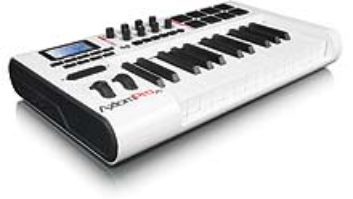Metric Halo’s SpectraFoo Complete adds a Transfer function, signal generator, 24-bit Audio Capture function and three sample code metering tools (a bit range meter, bit matrix meter and bit scope) to SpectraFoo’s fundamental set of software-based metering and analysis instruments.
TWEAKING THE DELAY FINDER
Clicking on the Compute Delay button in the Transfer Function Controls window brings up the Delay Finder window, showing a graphic representation of the SUT’s (System Under Test) impulse response. When analyzing the impulse response, ’Foo loads 1.5 seconds of audio data into RAM and automatically delays the source channel’s signal to align it with the response channel’s signal. The vertical white bar in the Delay Finder window’s graphic display shows the source channel’s delay/offset and usually parks on top of the most pronounced impact spike. To move the bar away from the impulse spike for a better view, simply click the Clear key on your QWERTY keyboard. This resets the timecode readout to zero and moves the bar to the onset of the source signal in the display. Alternatively, you can simply click on the bar and drag it to move it.
You can also tweak offsets in the timecode readout box. This is useful when you want to modulate a “phase vs. frequency” trace away from a wraparound point for a clearer view of the SUT’s performance in a select frequency band. (Be aware of the additional, progressive phase shift this will introduce in the display.) Use your QWERTY keyboard’s left and right arrow keys to move the timecode cursor into the field you want (e.g., selecting seconds or milliseconds) and use the up/down arrow keys to increment/decrement the value.
GOING DEEPER VIA .AIF
Once the Delay Finder’s data is in RAM, convert it into an .AIF-format audio capture for further analysis in SpectraFoo. Hold down the Command key while clicking in the upper part of the Delay Finder window near the timecode readout. The Delay Finder’s display also toggles between showing the impulse response and the power history peak energy curve each time you click or Option-click in this part of the window. The power history view is especially useful for looking at RT60 decay. The conversion to .AIF format done, open the audio capture via ’Foo’s Capture List window and view it in some cool ways.
If you’re working in ’Foo’s stand-alone environment, then type Command-O, navigate through the file directory to your .AIF file and double-click the file to open the Capture List window. Here you’ll see a list of all audio captures that have been opened during your current session.
If you’re working with SpectraFoo’s MAS or TDM plug-in interface, then you’ll need to Command-click in the upper right corner of the Delay Finder window to make the Capture List window appear. The window will initially be blank — click inside it to make your audio capture appear in the list. Note that a new audio capture defaults to the name “Impulse” until you save it with a custom title to your hard drive.
Double-click on the desired audio capture in the Capture List window to make the Overview window appear. The default view shown in the Overview will be the envelope of the impulse response, but you should resize and zoom the window to make sense of its data. Clicking on the Mac zoom box on the right side of the Overview’s title bar will make the window fill your screen. If you don’t see the impulse response spike in the display, then zoom all the way out, drag the green wiper slightly to the right of the impulse strike and then zoom all the way in.
You can also select simultaneous views (arranged in tiers) of your audio capture’s power and spectral histories in the Overview window. Power balance and correlation history can also be shown for applications involving dual channels. (Transfer function files are mono.) Select the view(s) you want via the Ribbons pop-up menu at the bottom of the Overview window. To select just one view while de-selecting all others, make your desired selection while holding the Option key down. May the ’Foo be with you!
Michael Cooper is a Mix contributing editor and owner of Michael Cooper Recording in beautiful Sisters, Ore.



